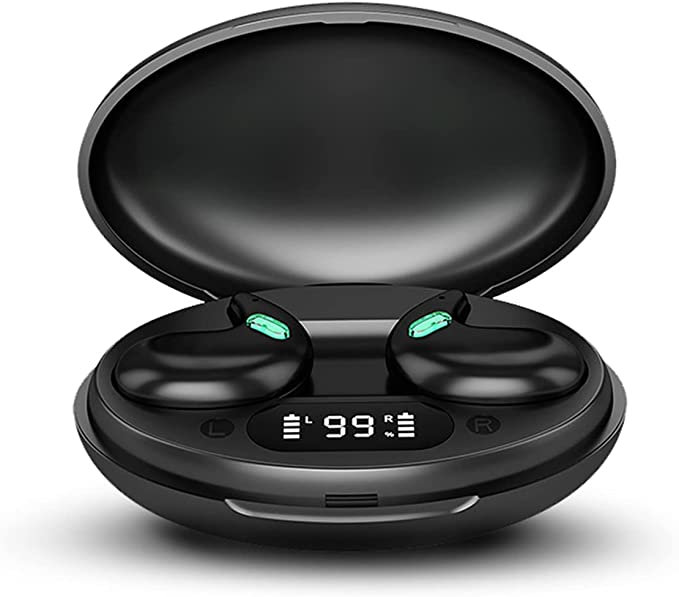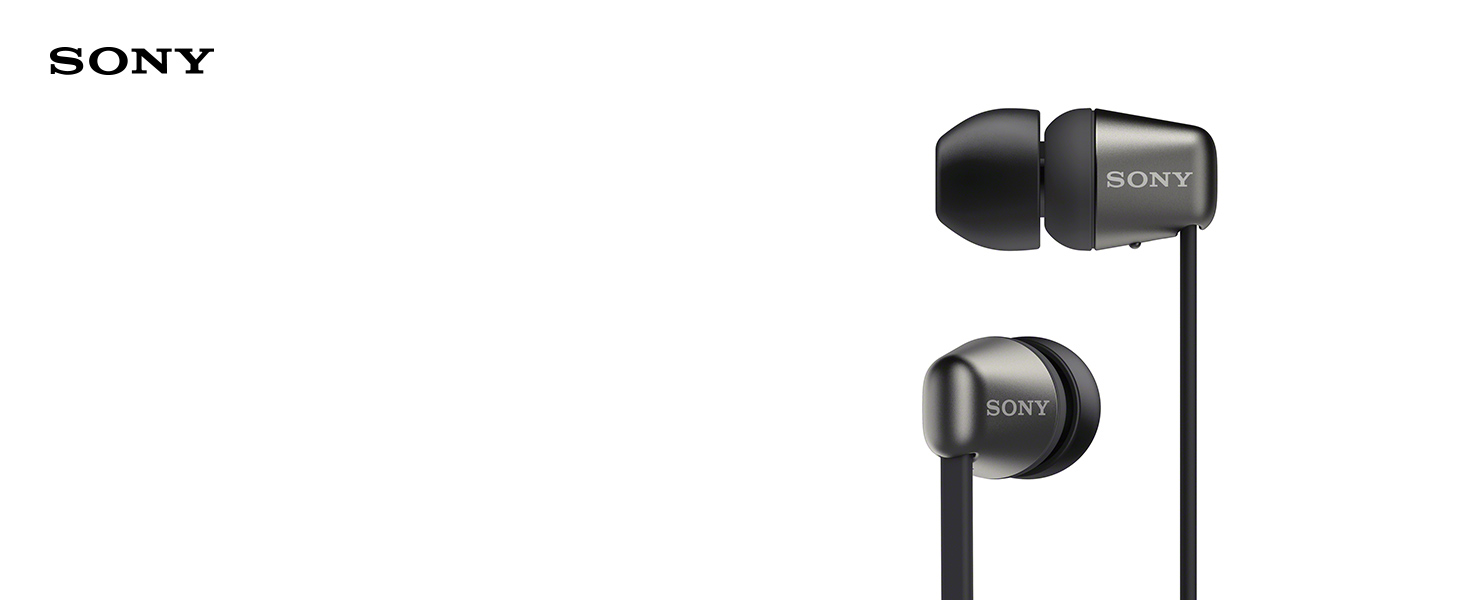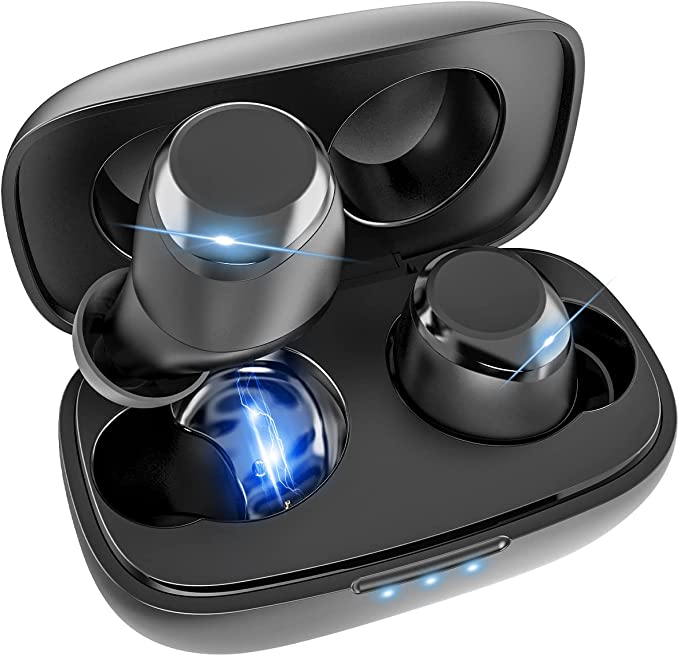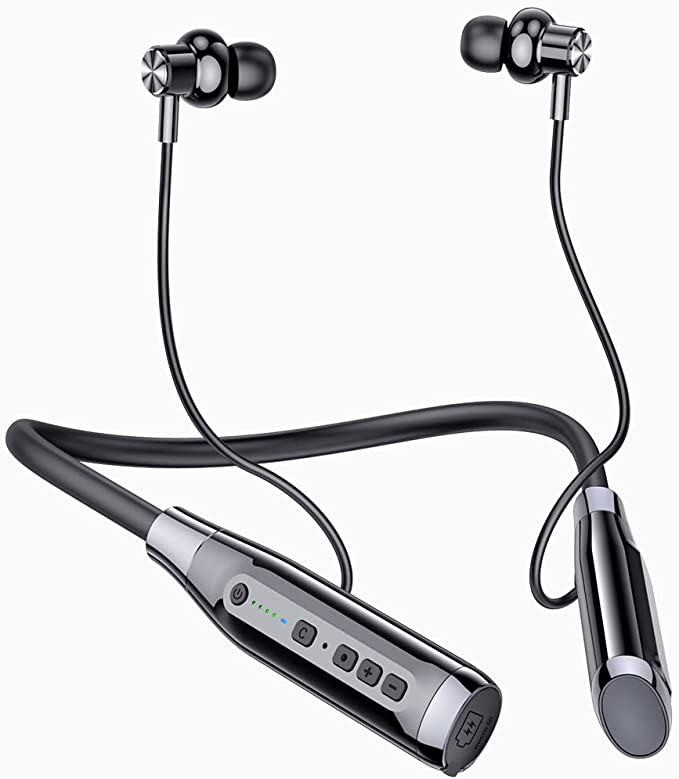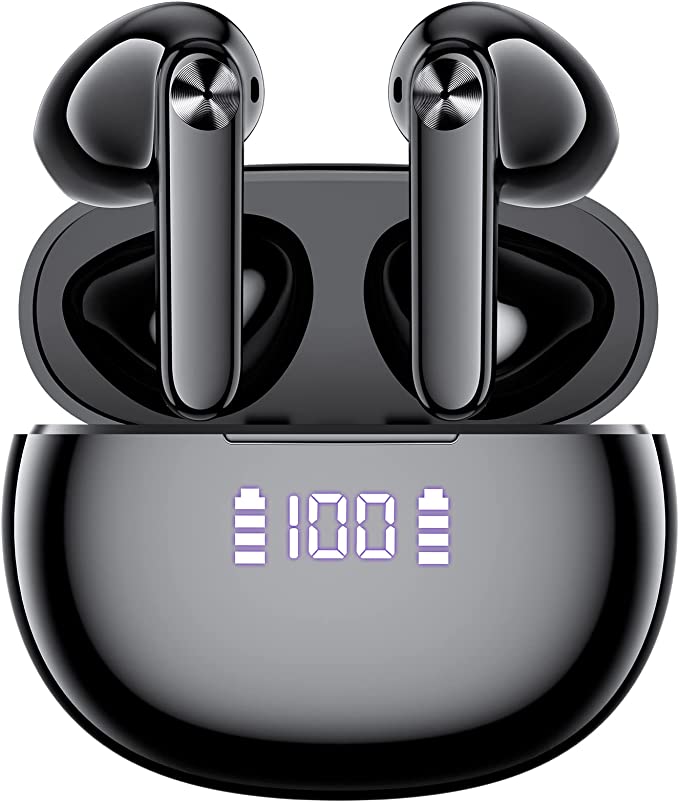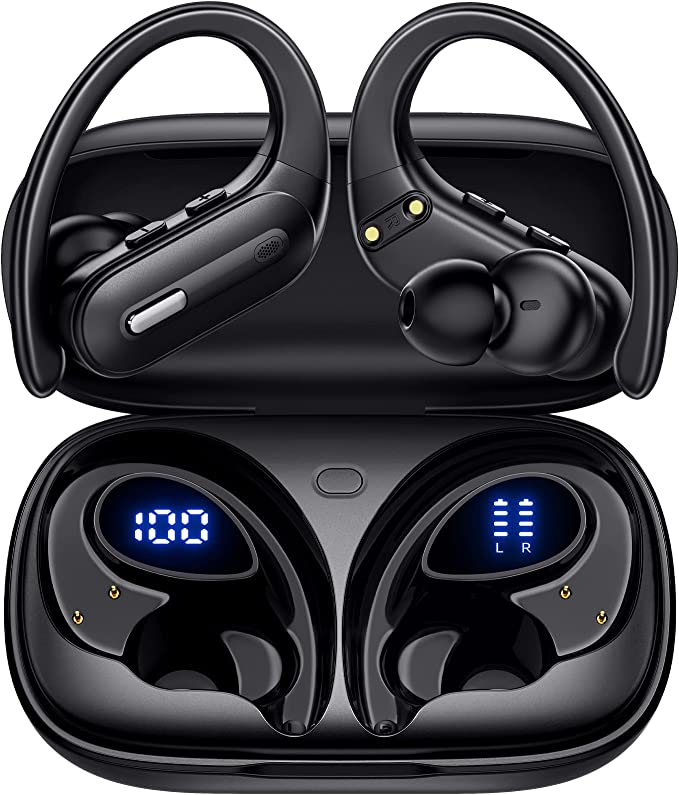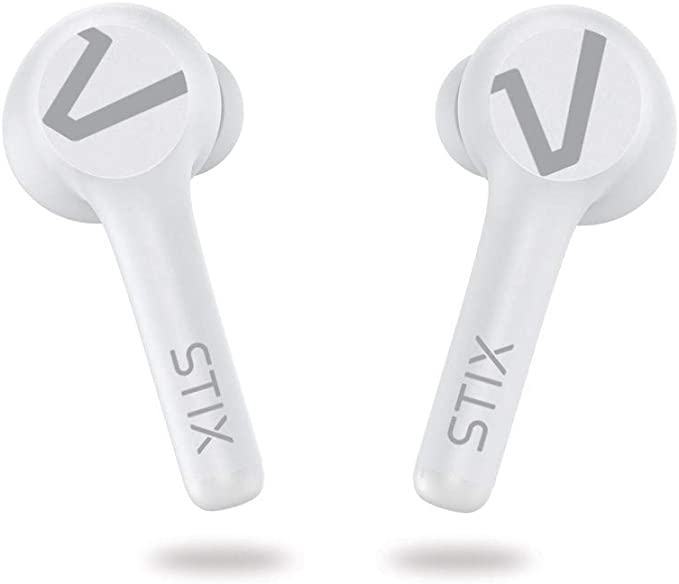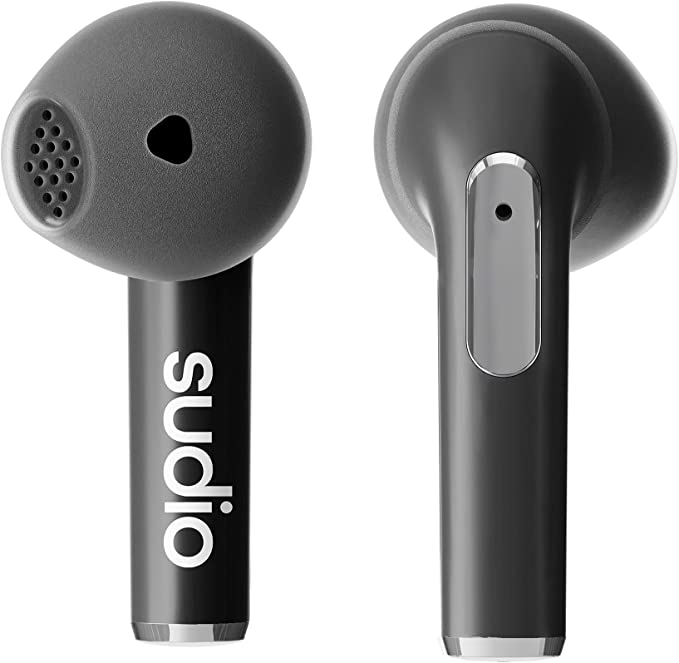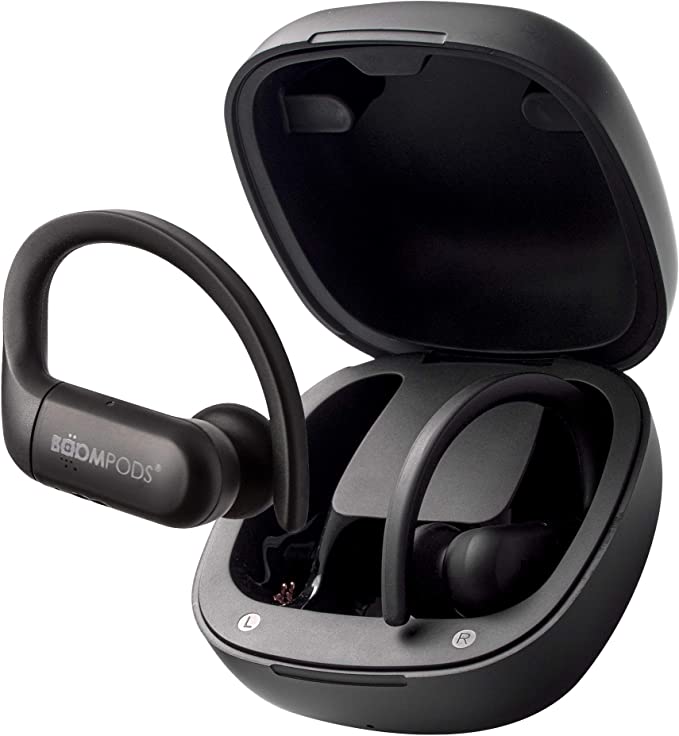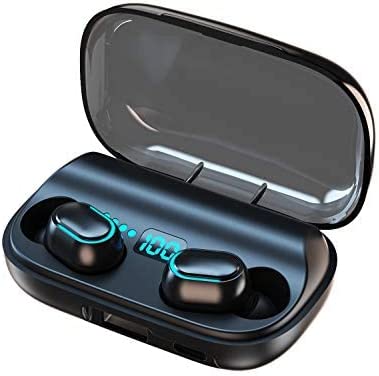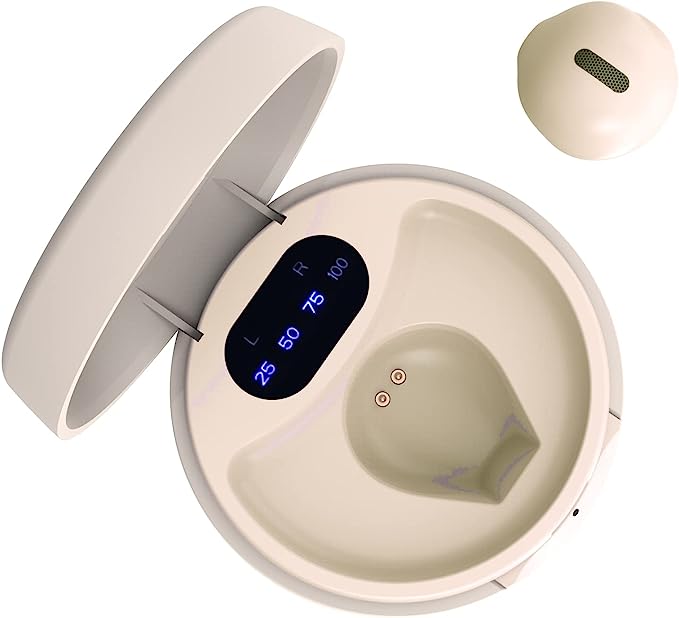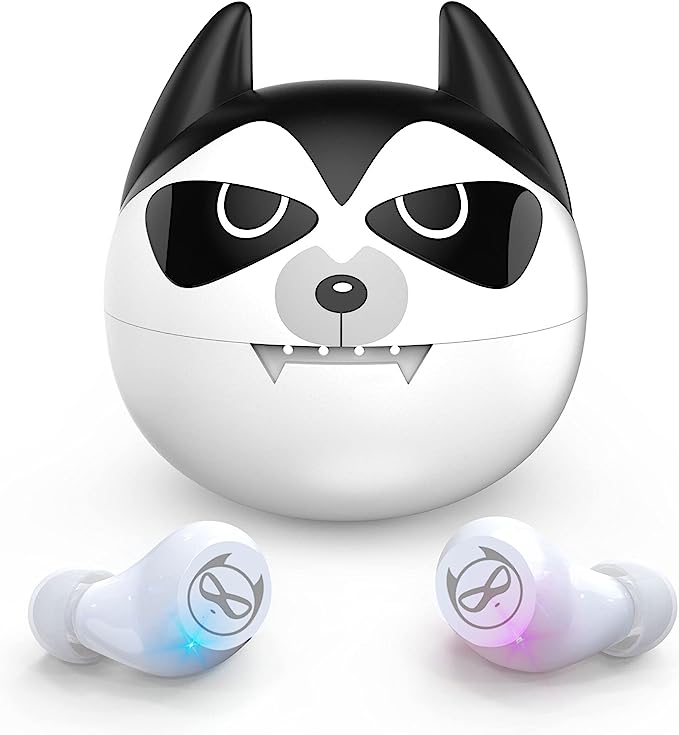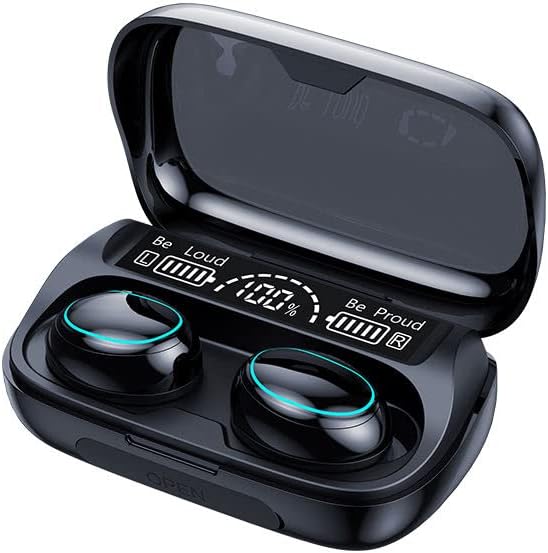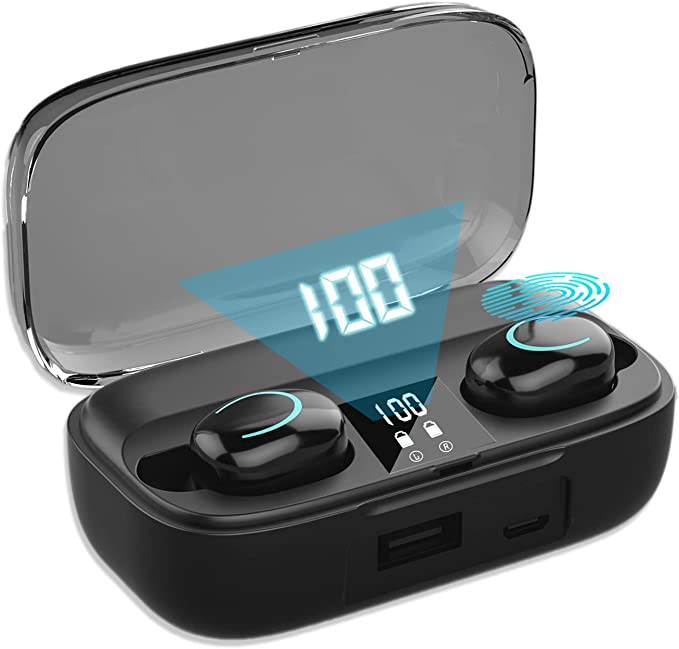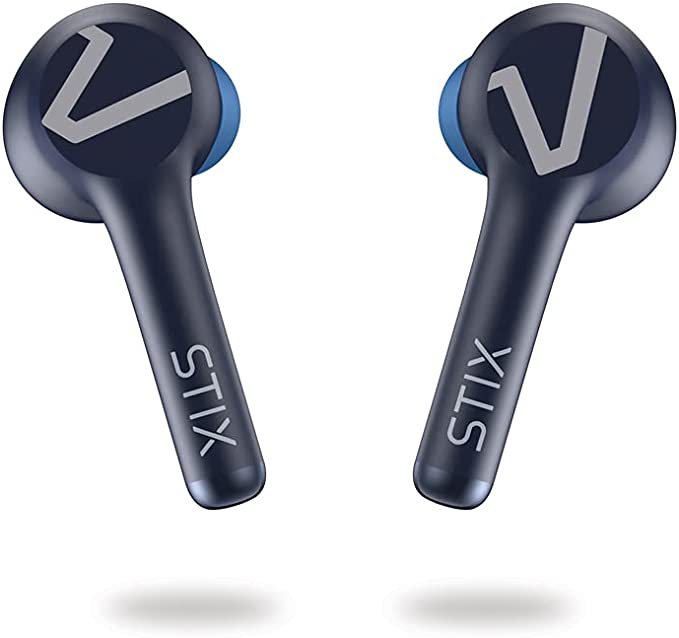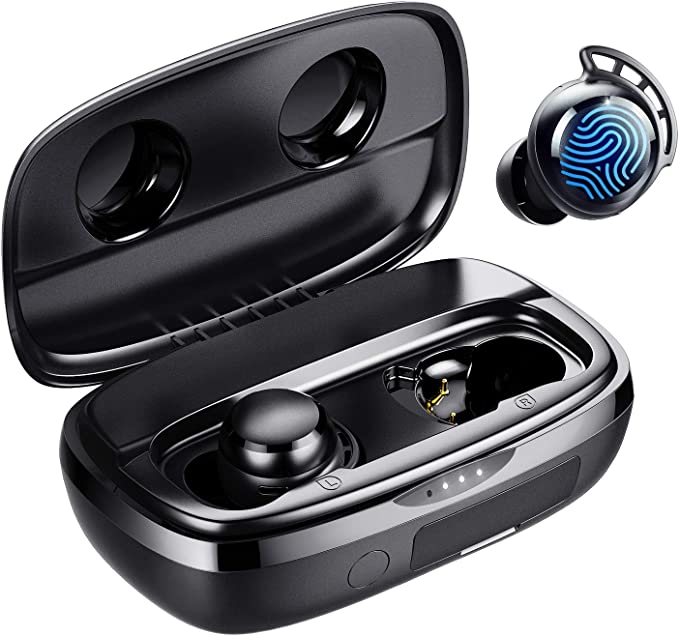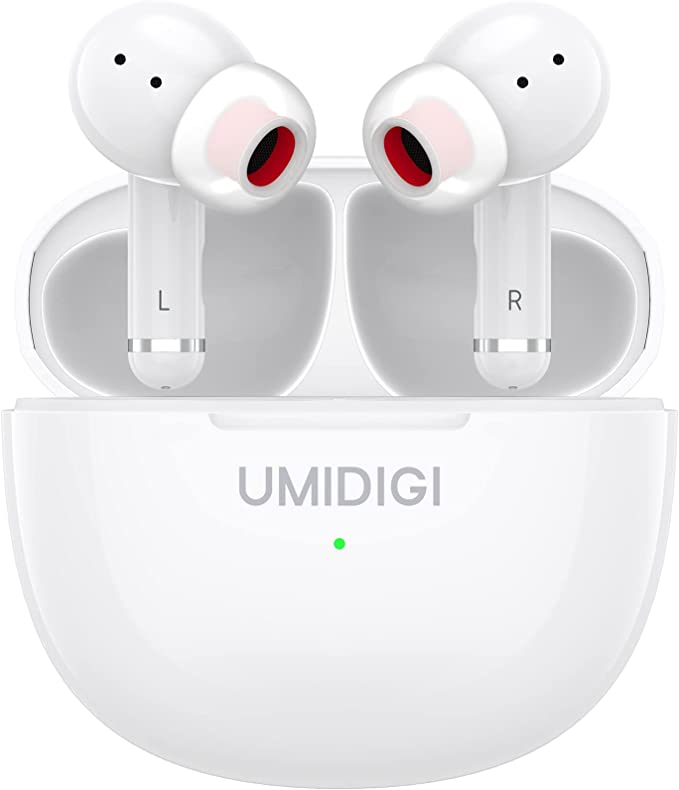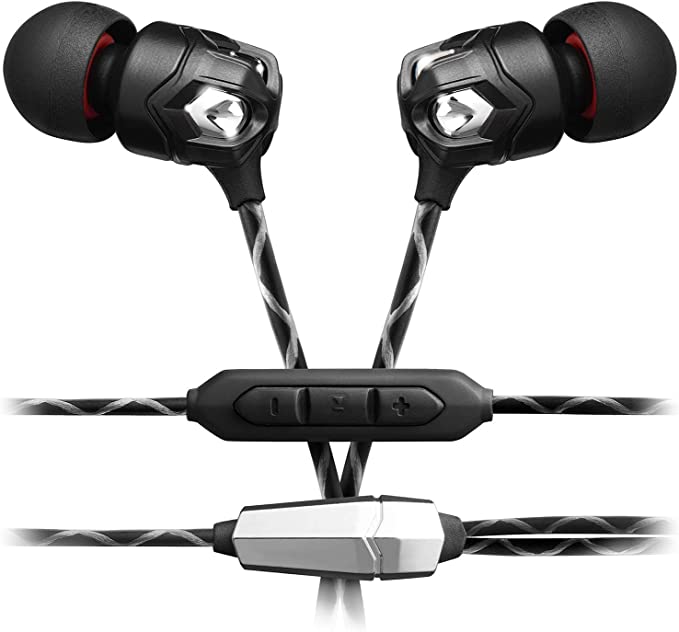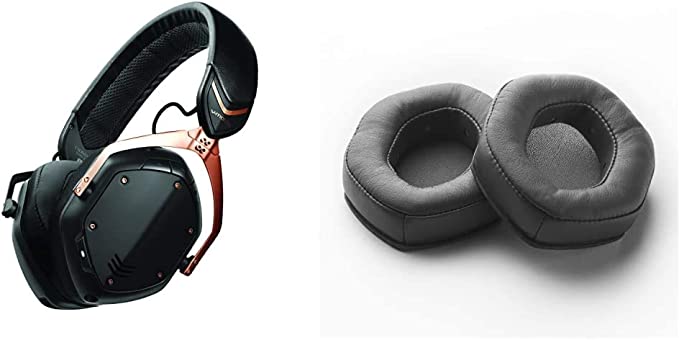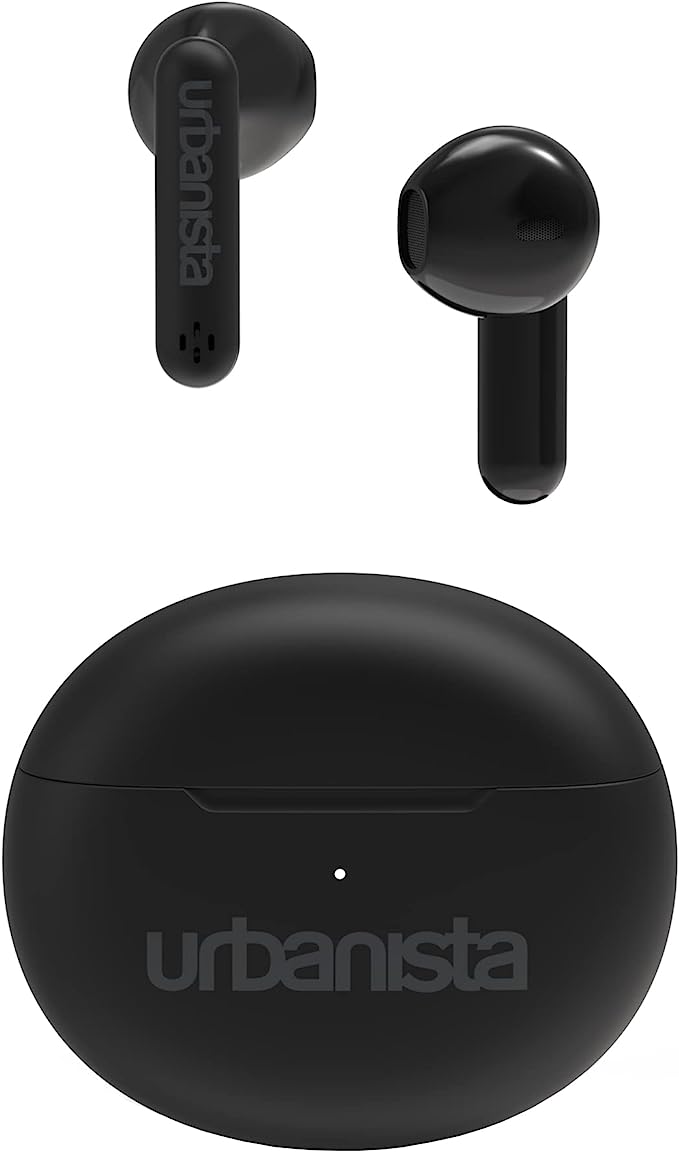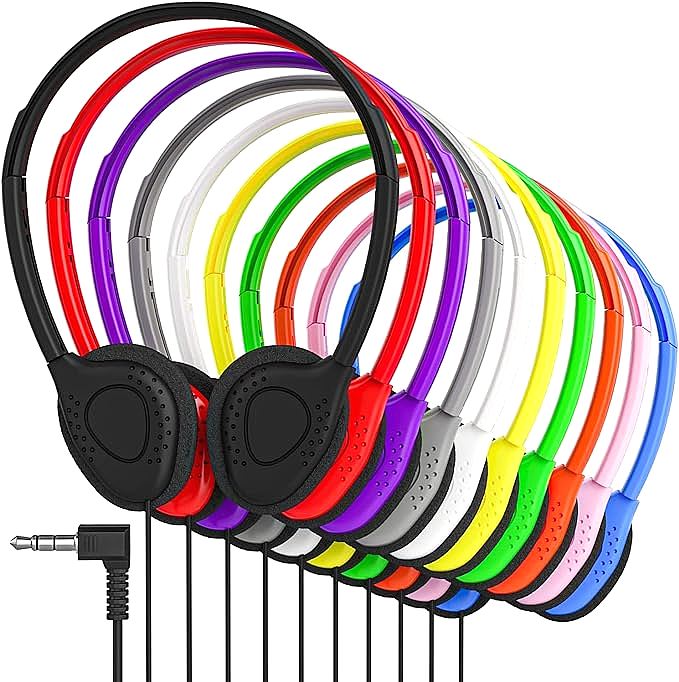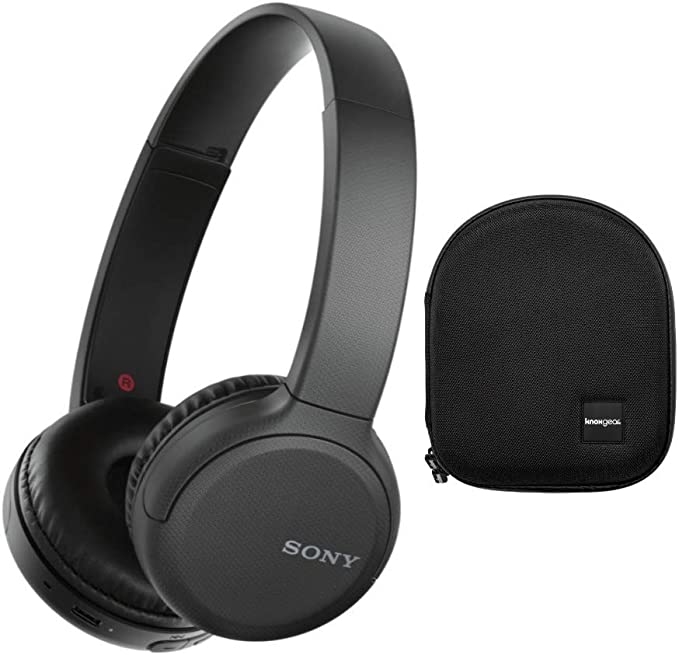Suomi M10 Wireless Earbuds: Long-Lasting Battery and Immersive Sound
Update on March 8, 2025, 4:08 a.m.
Imagine this: Sarah, a college student, is battling her daily commute. The cacophony of the city – rumbling buses, chattering crowds, and the incessant screech of train brakes – makes it impossible to focus on her online lecture. Her old wired earbuds constantly tangle, and the flimsy connection cuts out at the slightest movement. Frustrated, she wonders, “Isn’t there a better way to listen?” This is where the world of wireless earbuds, and specifically the Suomi M10, enters the picture. But how do these tiny devices actually work? Let’s embark on a journey into the fascinating science of sound and the technology that powers modern listening.

The Symphony of Sound: A Primer
Before we dissect the inner workings of the M10, we need to understand the fundamental nature of sound itself. Sound, in its simplest form, is a vibration. When an object vibrates – a guitar string, a vocal cord, or the diaphragm of a speaker – it creates pressure waves that travel through a medium, typically air. These waves are characterized by their frequency and amplitude.
Frequency, measured in Hertz (Hz), refers to the number of vibrations per second. A higher frequency corresponds to a higher-pitched sound, like a flute, while a lower frequency produces a lower-pitched sound, like a bass drum. The human ear, remarkably, can detect a wide range of frequencies, typically from 20 Hz to 20,000 Hz (though this range decreases with age).
Amplitude, on the other hand, relates to the intensity or loudness of the sound. It’s the size of the pressure wave. Larger amplitudes mean louder sounds, measured in decibels (dB). Prolonged exposure to high-decibel sounds can damage our hearing, a crucial point to remember in our increasingly noisy world.
The Human Ear: Nature’s Masterpiece of Audio Engineering
Our ears are incredibly sophisticated instruments. When sound waves reach the ear, they first encounter the outer ear, which funnels the sound into the ear canal. The waves then vibrate the eardrum, a thin membrane that transmits the vibrations to three tiny bones in the middle ear: the malleus, incus, and stapes (hammer, anvil, and stirrup, respectively). These bones act as levers, amplifying the vibrations and passing them on to the inner ear.
The inner ear contains the cochlea, a fluid-filled, snail-shaped structure lined with thousands of tiny hair cells. These hair cells are tuned to different frequencies. When a specific frequency vibrates the fluid in the cochlea, the corresponding hair cells are stimulated, sending electrical signals to the brain via the auditory nerve. Our brain then interprets these signals as sound. It’s a breathtakingly complex process that happens in fractions of a second.
A Brief History of Listening: From Ear Trumpets to Wireless Freedom
Humans have long sought ways to enhance their listening experience. From the ear trumpets of the 18th century to the bulky headphones of the early 20th, the quest for better sound reproduction has been a constant journey. The invention of the transistor in the mid-20th century revolutionized electronics, paving the way for smaller, more portable audio devices. The advent of digital audio and, crucially, Bluetooth technology, finally ushered in the era of wireless freedom.
Suomi M10: Unveiling the Technology
The Suomi M10, like other wireless earbuds, relies on several key technologies to deliver its audio experience. Let’s break down the core components:
Bluetooth: The Wireless Bridge
Bluetooth is the invisible lifeline that connects the M10 to your smartphone, tablet, or computer. It’s a short-range wireless communication technology that uses radio waves in the 2.4 GHz frequency band to transmit data. Think of it as a tiny, invisible cable. While the provided materials don’t specify the exact Bluetooth version the M10 uses (a crucial detail!), most modern devices utilize Bluetooth 5.0 or later. These newer versions offer improved connection stability, faster data transfer rates (important for high-quality audio), and lower power consumption, contributing to longer battery life. The different versions achieve this through improvements in the underlying radio technology and data encoding methods.

Powering the Performance: Battery Life and the 2200mAh Charging Case
One of the most touted features of the Suomi M10 is its extended battery life, thanks to the substantial 2200mAh charging case. To understand what this means, let’s revisit the concept of milliampere-hours (mAh). This unit measures electric charge, essentially indicating how much “energy fuel” the battery can store.
The earbuds themselves have a smaller internal battery, allowing for several hours of playback on a single charge. The charging case acts like a portable power bank, replenishing the earbuds’ batteries multiple times before the case itself needs recharging. The “up to 180 hours” figure represents the total combined playtime, including the earbuds’ initial charge and all subsequent charges from the case. It’s crucial to understand that this is a theoretical maximum. Actual playtime will vary significantly based on factors like listening volume, the use of features like CVC (which we’ll discuss shortly), and even the ambient temperature. Louder volumes and active features consume more power, reducing the overall playtime.
Decoding the LCD: A Window into Battery Status
Unlike many earbuds that rely on simple LED indicators, the Suomi M10 features a smart LCD digital display. This provides a precise readout of the remaining battery percentage for both the charging case and each individual earbud. This level of detail helps users manage their power consumption more effectively, avoiding unexpected shutdowns.
The underlying technology behind LCDs (Liquid Crystal Displays) is fascinating. They utilize liquid crystals, substances that exhibit properties of both liquids and solids. These crystals can be manipulated by applying an electric field. When an electric field is present, the liquid crystals align in a specific way, either blocking or allowing light to pass through. By controlling the electric field across a grid of tiny segments, the display can form numbers and symbols, showing the battery level. LCDs are known for their low power consumption, which is why they’re ideal for devices like the M10’s charging case.
CVC 8.0: Clarifying the Noise (During Calls)
The Suomi M10 boasts CVC 8.0 noise cancellation. It’s essential to differentiate this from Active Noise Cancellation (ANC). ANC is a more sophisticated technology that uses microphones and speakers to actively generate sound waves that cancel out incoming external noise. This creates a “quiet bubble” for the listener, ideal for blocking out ambient sounds like airplane engines or traffic noise.
CVC (Clear Voice Capture), on the other hand, is primarily designed to improve call quality. It focuses on reducing background noise picked up by the microphone during phone calls or voice chats. CVC uses digital signal processing (DSP) algorithms to filter out unwanted sounds like wind noise or background chatter, making your voice clearer to the person on the other end of the line. While CVC doesn’t provide the immersive silence of ANC, it significantly enhances communication clarity in noisy environments.
Touch Controls: Intuitive Interaction
The M10 features touch controls, allowing you to manage music playback, answer calls, and adjust volume with simple taps on the earbuds. This is achieved through capacitive touch sensing. The surface of the earbud contains a sensor that detects changes in capacitance – the ability of a material to store an electrical charge. When your finger touches the sensor, it alters the capacitance. This change is detected by a microcontroller, which then triggers the corresponding function (play, pause, skip track, etc.).

IPX7 Waterproofing: Protection from the Elements
The IPX7 rating signifies that the Suomi M10 earbuds are protected against immersion in water up to 1 meter deep for up to 30 minutes. This doesn’t mean you should go swimming with them, but it does provide peace of mind against sweat during workouts or accidental splashes. The “IP” code stands for “Ingress Protection,” and the “X” indicates that the device hasn’t been formally tested for dust resistance. The “7” is the crucial number, representing the level of water protection.
Experiencing the M10: Real-World Scenarios
Let’s return to Sarah, our student battling the noisy commute. With the Suomi M10, she can finally focus on her online lecture. The long battery life ensures she won’t run out of power during her long journey, and the CVC noise cancellation minimizes distractions from fellow passengers’ conversations.
For a fitness enthusiast, the M10’s secure fit, thanks to the ergonomic ear hooks, and IPX7 sweat resistance make them ideal workout companions. The touch controls allow for easy music management without interrupting their exercise routine.
Even in a busy office environment, the M10 can be a valuable tool. The clear call quality provided by CVC ensures smooth communication during conference calls, and the comfortable fit allows for extended wear.

Conclusion: The Future of Sound, and the M10’s Place Within It
The Suomi M10 represents a solid entry in the affordable wireless earbud market. While it may not boast the high-end features of more expensive models, like active noise cancellation, its strengths lie in its exceptional battery life, convenient charging case with an LCD display, and reliable performance for everyday use.
The future of wireless audio is undoubtedly exciting. We can expect even more advanced noise cancellation technologies, improved audio codecs for higher fidelity sound, and perhaps even features like real-time translation and personalized sound profiles. The Suomi M10, while a product of today, offers a glimpse into the possibilities of tomorrow’s listening experiences – a world where clear, immersive sound is accessible to everyone, anytime, anywhere. While it does has its limitation, especially not providing the specifics on the driver and Bluetooth version, it is a good starting point for many.
